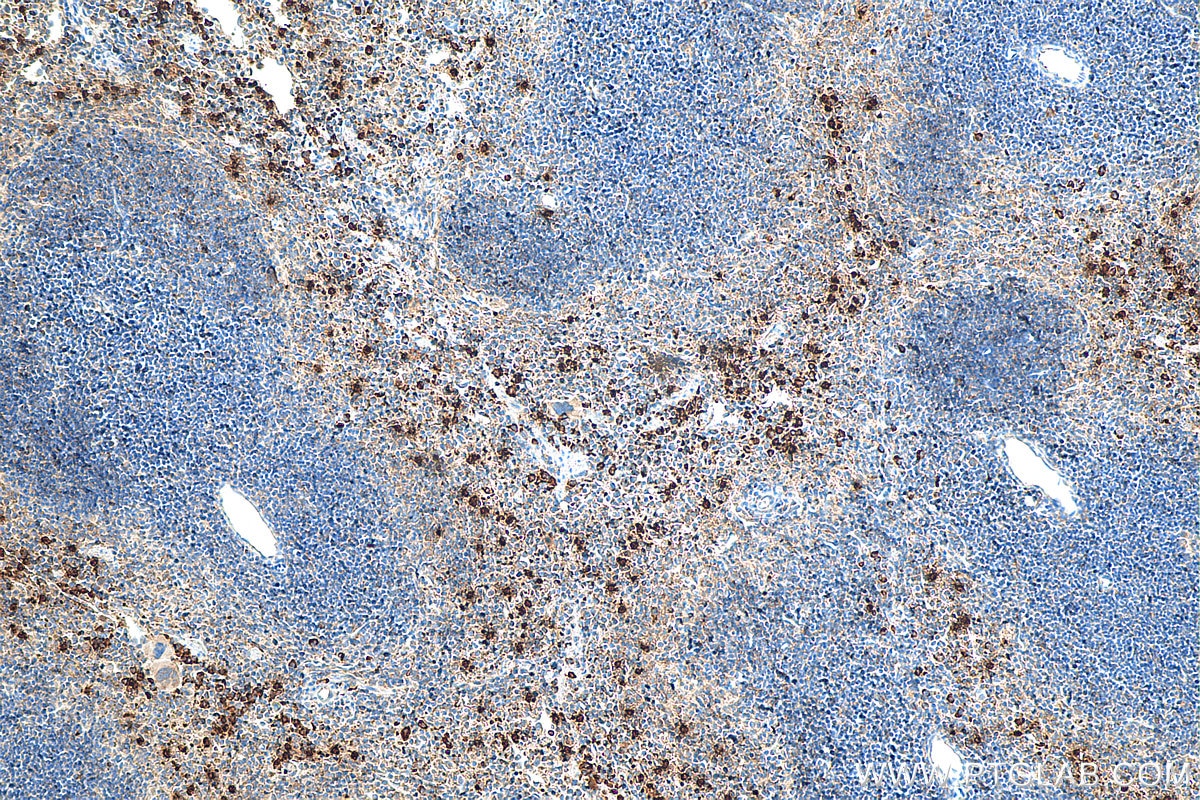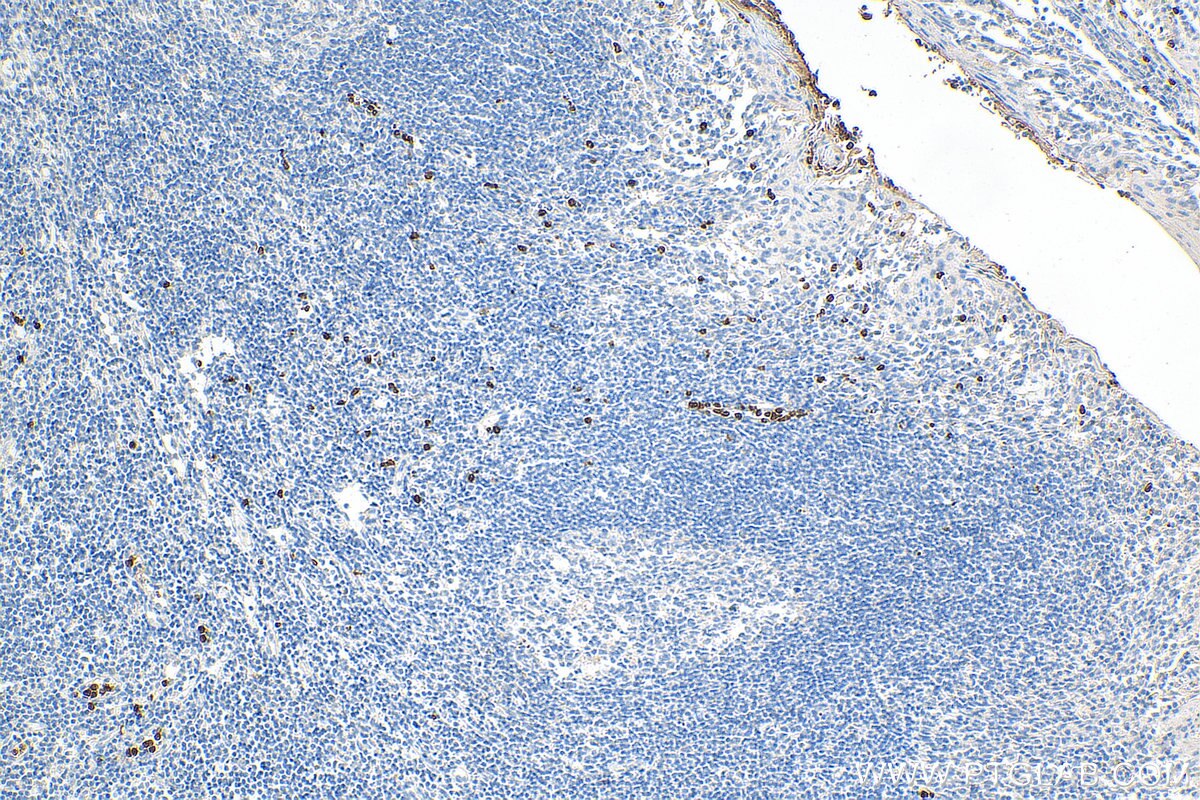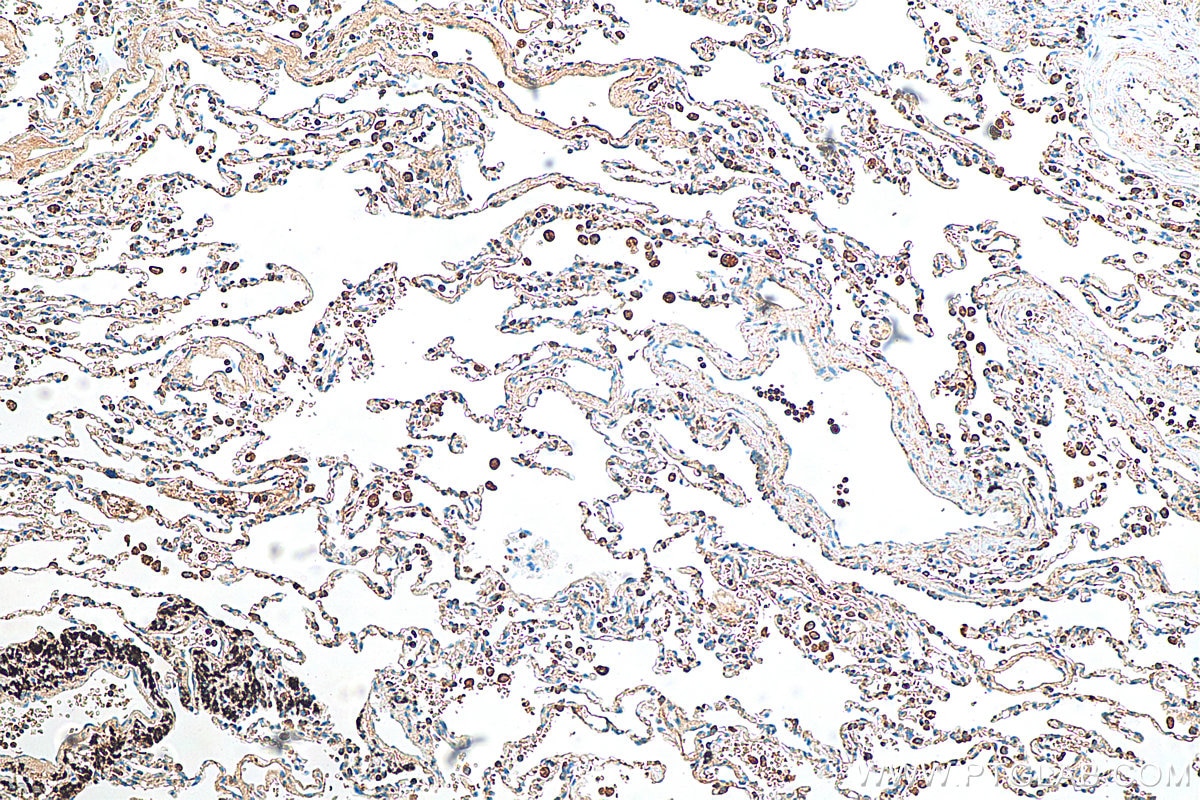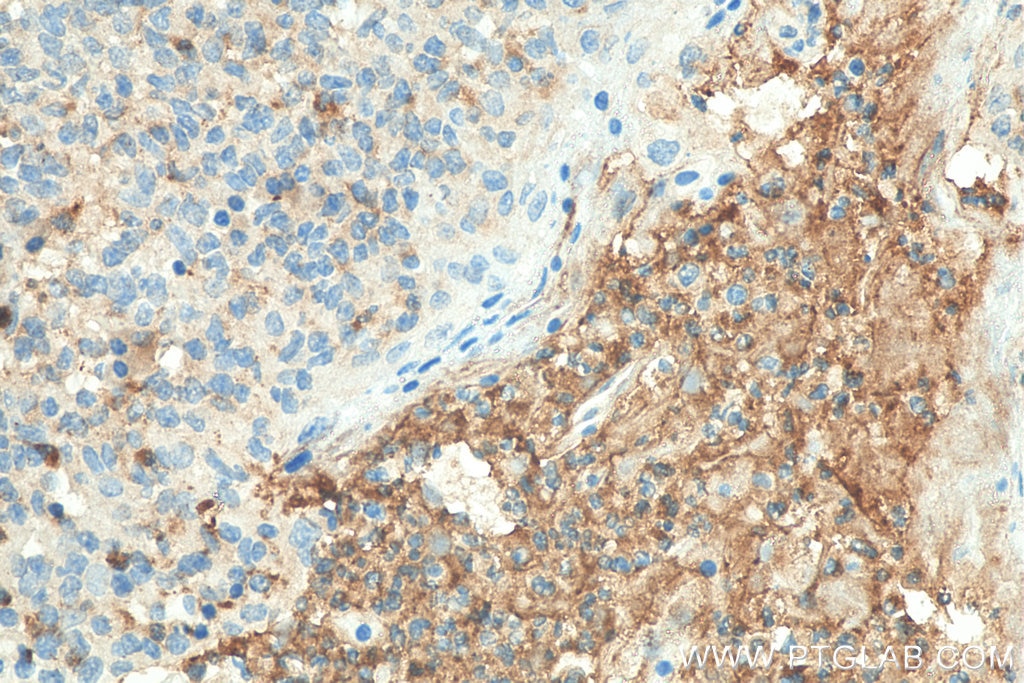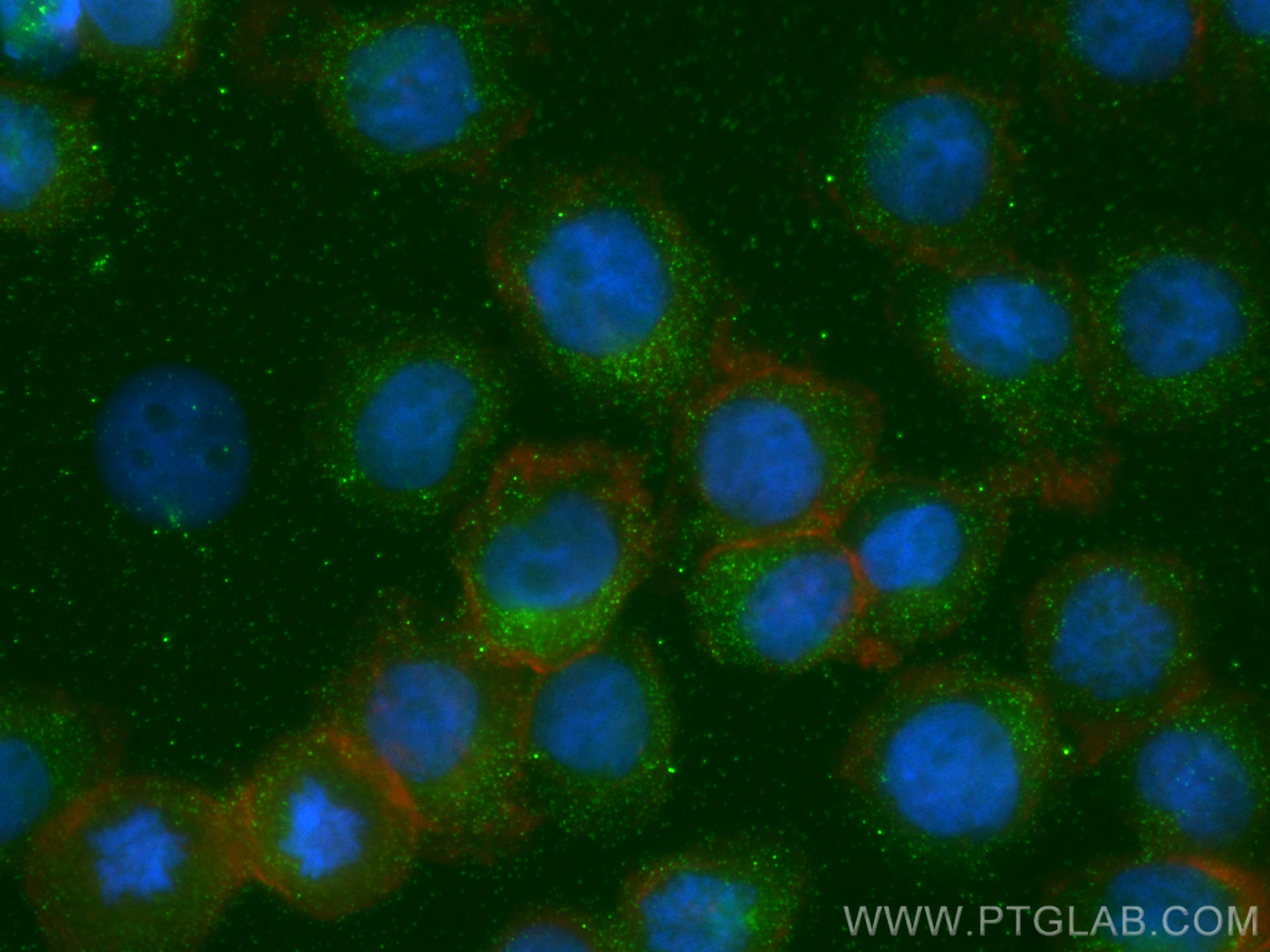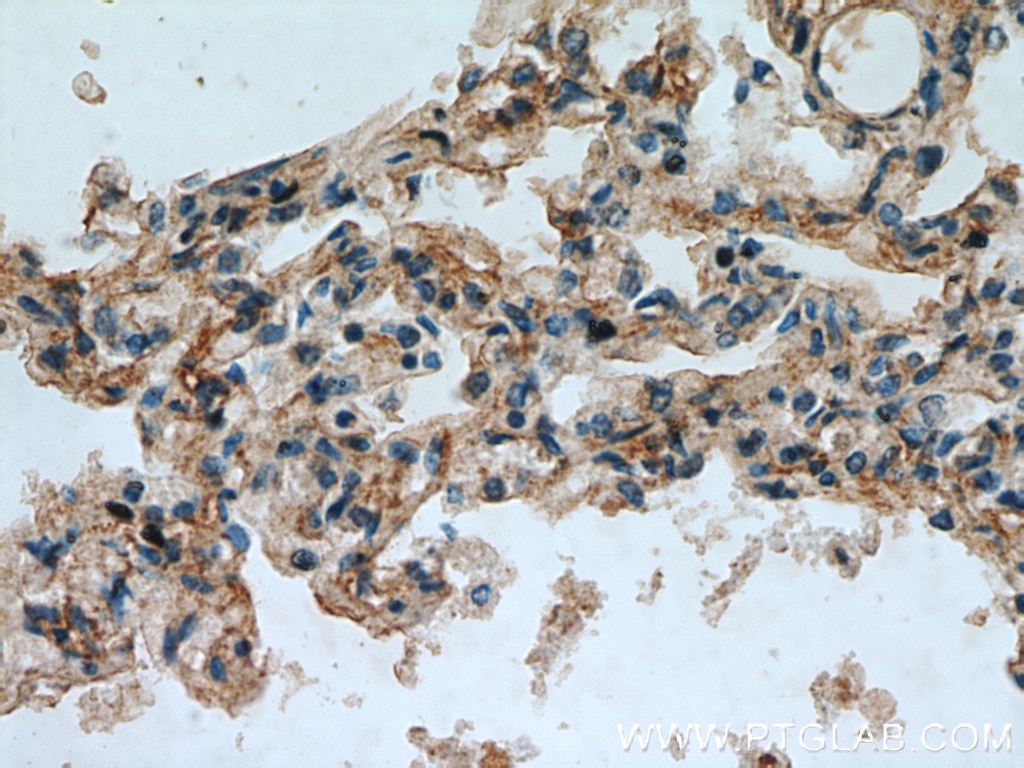Anticorps Polyclonal de lapin anti-CAMP
CAMP Polyclonal Antibody for IF, IHC, ELISA
Hôte / Isotype
Lapin / IgG
Réactivité testée
Humain, souris
Applications
IHC, IF/ICC, ELISA
Conjugaison
Non conjugué
N° de cat : 12009-1-AP
Synonymes
Galerie de données de validation
Applications testées
| Résultats positifs en IHC | tissu splénique de souris, tissu cérébral de souris, tissu d'amygdalite humain, tissu de cancer du poumon humain, tissu splénique humain il est suggéré de démasquer l'antigène avec un tampon de TE buffer pH 9.0; (*) À défaut, 'le démasquage de l'antigène peut être 'effectué avec un tampon citrate pH 6,0. |
| Résultats positifs en IF/ICC | cellules HeLa, cellules THP-1 |
Dilution recommandée
| Application | Dilution |
|---|---|
| Immunohistochimie (IHC) | IHC : 1:50-1:500 |
| Immunofluorescence (IF)/ICC | IF/ICC : 1:200-1:800 |
| It is recommended that this reagent should be titrated in each testing system to obtain optimal results. | |
| Sample-dependent, check data in validation data gallery | |
Applications publiées
| IHC | See 1 publications below |
Informations sur le produit
12009-1-AP cible CAMP dans les applications de IHC, IF/ICC, ELISA et montre une réactivité avec des échantillons Humain, souris
| Réactivité | Humain, souris |
| Réactivité citée | Humain |
| Hôte / Isotype | Lapin / IgG |
| Clonalité | Polyclonal |
| Type | Anticorps |
| Immunogène | CAMP Protéine recombinante Ag2622 |
| Nom complet | cathelicidin antimicrobial peptide |
| Masse moléculaire calculée | 170 aa, 19 kDa |
| Numéro d’acquisition GenBank | BC055089 |
| Symbole du gène | CAMP |
| Identification du gène (NCBI) | 820 |
| Conjugaison | Non conjugué |
| Forme | Liquide |
| Méthode de purification | Purification par affinité contre l'antigène |
| Tampon de stockage | PBS avec azoture de sodium à 0,02 % et glycérol à 50 % pH 7,3 |
| Conditions de stockage | Stocker à -20°C. Stable pendant un an après l'expédition. L'aliquotage n'est pas nécessaire pour le stockage à -20oC Les 20ul contiennent 0,1% de BSA. |
Informations générales
CAMP is a member of an antimicrobial peptide family, characterized by a highly conserved N-terminal signal peptide containing a cathelin domain and a structurally variable cationic antimicrobial peptide, which is produced by extracellular proteolysis from the C-terminus. In addition to its antibacterial, antifungal, and antiviral activities, the encoded protein functions in cell chemotaxis, immune mediator induction, and inflammatory response regulation. CAMP encodes the 18-kDa proprotein hCAP18. FALL-39 and LL-37 are the mature cathelicidin peptides. This antibody can recognize all the proprotein and cleaved species.
Protocole
| Product Specific Protocols | |
|---|---|
| IHC protocol for CAMP antibody 12009-1-AP | Download protocol |
| IF protocol for CAMP antibody 12009-1-AP | Download protocol |
| Standard Protocols | |
|---|---|
| Click here to view our Standard Protocols |
Publications
| Species | Application | Title |
|---|---|---|
EMBO Mol Med Gut microbiota-CRAMP axis shapes intestinal barrier function and immune responses in dietary gluten-induced enteropathy. | ||
Pharm Biol Modified BuShenYiQi formula alleviates experimental allergic asthma in mice by negative regulation of type 2 innate lymphoid cells and CD4 + type 9 helper T cells and the VIP-VPAC2 signalling pathway | ||
Immunobiology IL-33 synergistically promotes the proliferation of lung cancer cells in vitro by inducing antibacterial peptide LL-37 and proinflammatory cytokines in macrophages. | ||
Res Vet Sci Proteomic analysis of murine bone marrow derived dendritic cells in response to peste des petits ruminants virus. | ||
J Alzheimers Dis Scutellarin Modulates the Microbiota-Gut-Brain Axis and Improves Cognitive Impairment in APP/PS1 Mice | ||
Adv Sci (Weinh) Oral Immunotherapy Reshapes Intestinal Immunosuppression via Metabolic Reprogramming to Enhance Systemic Anti-Tumor Immunity |
